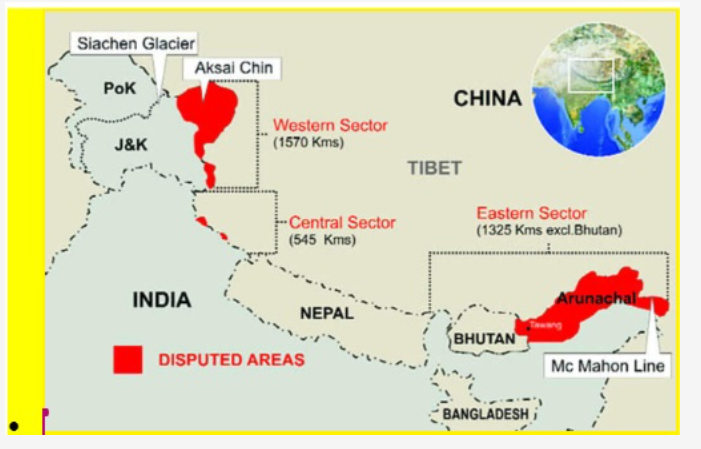17 October 2024 : Daily Current Affairs
1. Escalating Tensions: North Korea Mobilizes Amid Renewed Hostility with South Korea
(Source: Indian Express; Section: Explained; Page: 15)
| Topic: GS2 – International Relations |
| Context: |
|
Analysis of News:
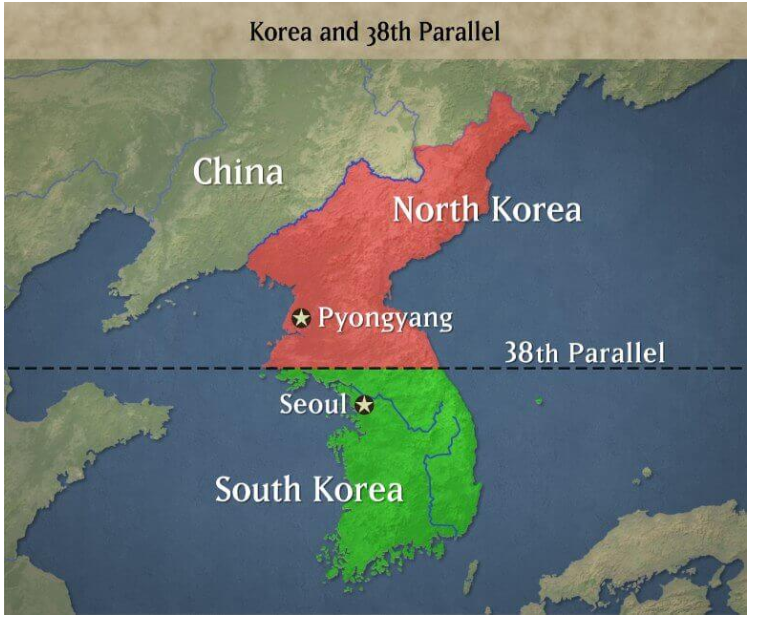
Historical Context
- The Korean Peninsula was divided after Japan’s surrender in 1945, with the Soviet Union and China supporting North Korea and the U.S. backing South Korea.
- The Korean War (1950-1953) resulted in an armistice but no peace treaty, leaving both nations technically at war.
- Over the decades, reunification efforts were made, but progress was minimal, especially as North Korea developed nuclear weapons, facing sanctions from the UN and the West.
Genesis of Current Tensions
- The breakdown of U.S.-North Korea talks in 2019, particularly after the failed Hanoi summit between Donald Trump and Kim Jong Un, was a turning point. Kim viewed the collapse of negotiations as a significant loss, leading North Korea to renew its nuclear program.
- In 2024, Kim declared South Korea as the North’s “primary foe,” officially abandoning hopes for peaceful reunification, culminating in recent border tensions.
Potential for War
- While tensions are at their highest since 1950, experts believe that war is unlikely.
- North Korea’s actions are seen as tactics to strengthen internal unity by emphasizing external threats, rather than actual preparation for a large-scale conflict.
| What about India’s Position in Korean Conflict? |
|
| PYQ: Evaluate the economic and strategic dimensions of India’s Look East Policy in the context of the post-Cold War international scenario. (200 words/12.5m) (UPSC CSE (M) GS-2 2016) |
| Practice Question: Discuss the historical and geopolitical factors contributing to the persistent tensions between North and South Korea. In light of recent developments, evaluate the possibility of conflict and the role of external powers in the region. (150 words/10 m) |
2. India’s National Board for Wildlife Approves Key Road Projects to Strengthen Military Infrastructure Along the LAC
(Source: Indian Express; Section: Cover Page; Page: 01)
| Topic: GS3 – Internal Security |
| Context: |
| The article discusses the clearance of key road stretches by India’s National Board for Wildlife to enhance military infrastructure along the Line of Actual Control (LAC) with China, emphasizing strategic importance amid ongoing tensions. |
Analysis of News:
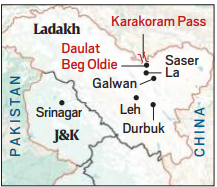
Strategic Importance of Road Development
- The recent approval by the National Board for Wildlife (NBWL) for five key road stretches, particularly through the Karakoram Wildlife Sanctuary along the Line of Actual Control (LAC), highlights India’s continued efforts to bolster military infrastructure in Ladakh.
- These road projects are crucial for providing alternative and faster access to Daulat Beg Oldie (DBO), the country’s northernmost military outpost and home to its highest airstrip.
- This is part of India’s broader strategy to enhance operational readiness along the sensitive border with China.
Road Stretches and Their Role
- The approved stretches include a road linking Chushul-Lukung to Thakung post and another between Durbuk-Shyok-Daulat Beg Oldie (DS-DBO) and Saser-Brangsa-Gapshan.
- The construction of the DS-DBO to Saser-Brangsa road, which will be built at an altitude of 17,000 feet, is particularly significant. These new routes are strategically designed to improve troop and resource mobility, especially in times of hostilities.
- The DS-DBO route, already close to Chinese-held territory, provides crucial surveillance and response capabilities.
- The new roads will allow India to respond quickly to any developments along the LAC, especially in light of ongoing tensions following the 2020 Galwan Valley clashes.
Enhancing Tactical and Operational Capabilities
- The Ministry of Defence emphasized the importance of these roads for maintaining tactical dominance in critical areas. Regular patrolling and quick reaction teams stationed along these routes will ensure effective border management.
- During hostilities or border management operations, quick movement of troops and logistics becomes essential. The DS-DBO to SBGG link road plays a key role in this, allowing faster and more efficient deployment in the Sub-Sector North, which is highly sensitive to Chinese transgressions.
Leh-Chalunka Road and Local Connectivity
- Another key stretch, the Leh-Chalunka road, serves a dual purpose of connecting the Indus and Shyok valleys and ensuring maintenance of both military and civilian logistics in the Nubra valley.
- It is the only motorized road over the Ladakh range and plays a vital role in sustaining troop presence in this challenging terrain.
Wildlife and Environmental Considerations
- While these projects are vital for national security, they traverse ecologically sensitive areas such as the Karakoram Wildlife Sanctuary and Changthang cold desert sanctuary.
- The NBWL has cleared the projects with conditions, including the implementation of animal passage plans to minimize impact on local wildlife.
- Additionally, the Defence Ministry is required to obtain the necessary forestland diversion permissions, if applicable, ensuring that ecological concerns are addressed alongside defense imperatives.
Conclusion
- These new road projects mark a significant step in India’s efforts to strengthen its defense posture along the LAC.
- By improving connectivity to critical military outposts and ensuring rapid deployment capabilities, these infrastructure developments are key to maintaining operational readiness in the face of potential border conflicts with China.
- At the same time, balancing environmental concerns remains a challenge as these projects move forward.
| India and China Border Dispute |
|
The India-China border (3,488-kilometre) is not clearly defined in some areas, and there is no mutually agreed Line of Actual Control (LAC) in certain stretches. The LAC was established after the 1962 Indo-China war. The India-China border is divided into three sectors: Western Sector: Ladakh Middle Sector: Himachal Pradesh and Uttarakhand Eastern Sector: Arunachal Pradesh and Sikkim The main areas of dispute are Aksai Chin, located in the western sector, and Arunachal Pradesh, in the eastern sector. Aksai Chin is administered by China as part of Xinjiang, but India claims it as part of Ladakh. China claims the entire state of Arunachal Pradesh, calling it “South Tibet,” while India is an integral part of its territory. |
|
PYQ: Siachen Glacier is situated to the (2020) (a) East of Aksai Chin (b) East of Leh (c) North of Gilgit (d) North of Nubra Valley Ans: (d) |
| Practice Question: Critically analyze the implications of the National Board for Wildlife’s clearance of road projects in the Karakoram Wildlife Sanctuary for India’s national security and wildlife conservation. What measures should be taken to balance military infrastructure development with environmental protection? (150 words/10 m) |
3. Manufacture, marketing of antibiotics may be regulated; prescription to be mandatory
(Source – The Hindu, International Edition – Page No. – 6)
| Topic: GS2 – Social Justice – Health |
| Context |
|
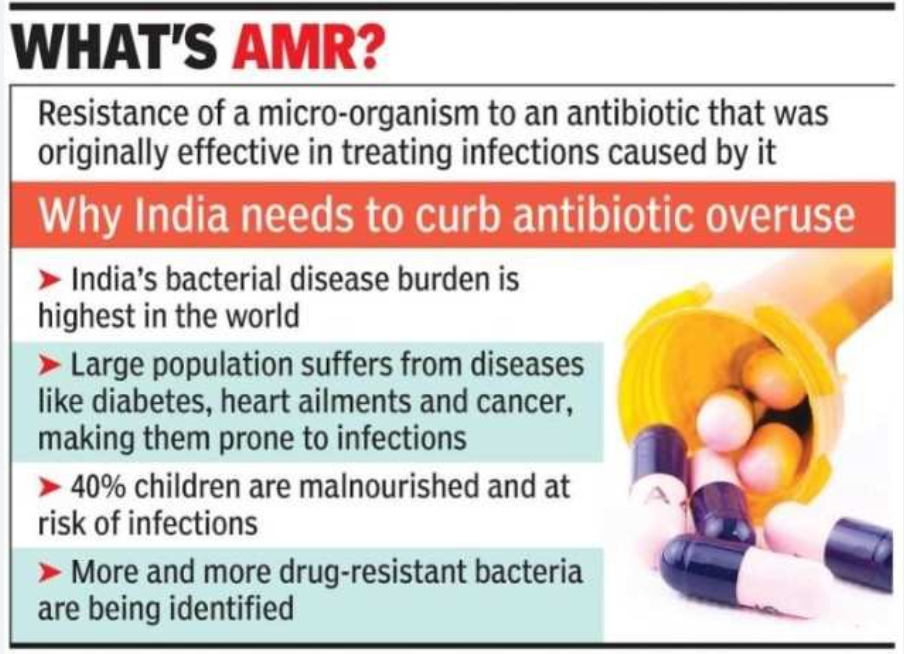
Reasons for the Step
- Antimicrobial resistance (AMR) is recognized as a global public health threat.
- Misuse of antibiotics, antivirals, and antifungals has contributed to rising drug resistance.
- The Indian Council of Medical Research (ICMR) report highlights drug resistance in diseases like urinary tract infections, bloodstream infections, pneumonia, and typhoid.
- This move aims to curb misuse of antibiotics and promote their responsible use to prevent further escalation of drug-resistant infections.
Implications of the Move
- Antibiotics will require manufacturing, marketing, and sale documentation under the “new drug” category.
- Manufacturers will need to obtain clearance from the Union government instead of State drug administrations.
- Patients will only be able to buy antibiotics with a prescription, limiting over-the-counter access.
- A blue strip or box will be added to the labelling of antimicrobial products under the Drugs Rules, 1945.
| Drugs Technical Advisory Board (DTAB) |
|
| Practice Question: Discuss the global and national challenges posed by antimicrobial resistance (AMR). Analyse the factors contributing to the rise of AMR in India and suggest comprehensive strategies to mitigate its impact on public health and the healthcare system. (250 Words /15 marks) |
PRELIMS FACTS
1. Centre Announces MSP Hike for Rabi Crops: Wheat Price Increased by 6.59% for 2025-26 Season
(Source: Indian Express; Section: Govt & Politics; Page: 08)
| Context: |
| The Indian government has raised the Minimum Support Prices (MSP) for six Rabi crops, including a 6.59% hike for wheat, ahead of the 2025-26 marketing season. |
Analysis of News:
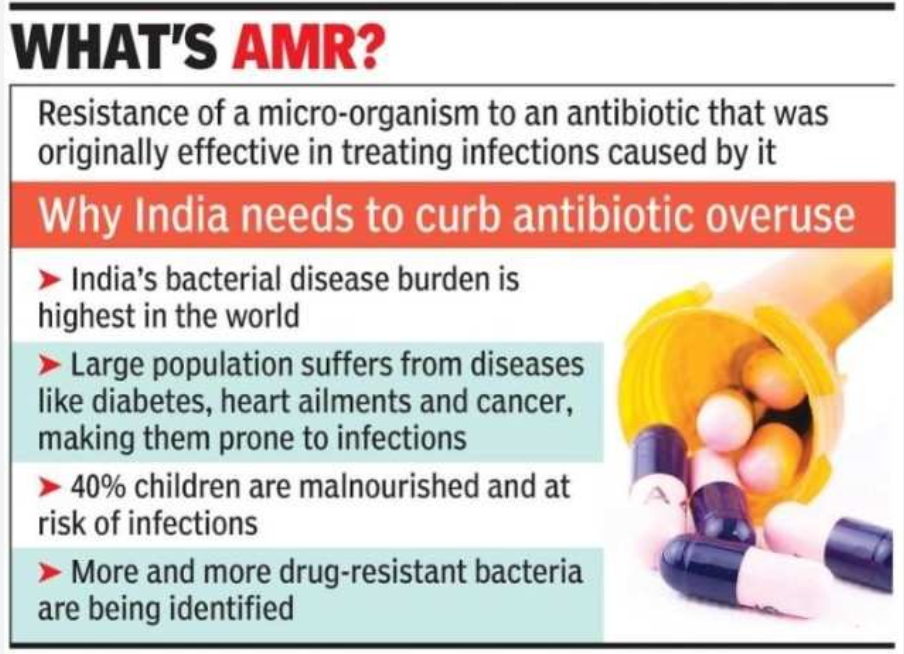
What is the Minimum Support Price (MSP)?
- The MSP regime was established in 1965 by setting up the Agricultural Prices Commission (APC) as a form of market intervention to enhance national food security and protect farmers from significant decline in market prices.
MSP Calculation:
- The Commission for Agricultural Costs & Prices (CACP) calculates three types of production costs for every crop, both at the state and all-India average levels.
- A2: Covers all paid-out costs directly incurred by the farmer in cash and kind on seeds, fertilisers, pesticides, hired labour, leased-in land, fuel, irrigation, etc.
- A2+FL: Includes an estimated value of unpaid family labour with A2.
- C2: A comprehensive cost, which is A2+FL cost plus imputed rental value of owned land plus interest on fixed capital, rent paid for leased-in land.
- The government maintains that the MSP was fixed at a level of at least 1.5 times the all-India weighted average Cost of Production (CoP), but it calculates this cost as 1.5 times the A2+FL cost.
Minimum Support Price (MSP) Announcement for Rabi Crops (2025-26)
- The Indian government has announced new Minimum Support Prices (MSP) for six Rabi crops for the 2025-26 Rabi Marketing Season (RMS).
- Wheat, the second-largest crop in the country, has seen an increase of ₹150 per quintal, or 6.59%, bringing the new MSP to ₹2,425 per quintal. Other crops such as barley, gram, lentil (masur), rapeseed and mustard, and safflower also received hikes in the range of 2.41% to 7.03%.
- The highest absolute hike was for rapeseed and mustard, which increased by ₹300 per quintal.
Wheat’s Significance and Procurement Trends
- Wheat is India’s second-largest crop in terms of area coverage, with 318.33 lakh hectares sown in 2023-24, yielding an estimated 113.92 million tonnes. Uttar Pradesh leads in wheat production, followed by Madhya Pradesh, Punjab, Haryana, and other states.
- In the 2024-25 RMS, the government procured 26.6 million tonnes of wheat, benefiting 22 lakh farmers. Wheat procurement has declined in recent years, dropping from a peak of 43.34 million tonnes in 2021-22.
2. Army to commemorate 62 years of the Battle of Walong with China
(Source – The Hindu, International Edition – Page No. – 4)
| Context |
|
Battle of Walong:
- The Battle of Walong occurred during the 1962 Indo-China war in Arunachal Pradesh.
- Indian troops, comprising units like 6 Kumaon, 4 Sikh, 3 Gorkha Rifles, and 4 Dogra, fiercely defended the region.
- Despite being vastly outnumbered (800 Indian soldiers vs 4,000 Chinese troops), the Indian Army held its ground for 27 days.
- The People’s Liberation Army (PLA) was forced to deploy an additional 15,000 troops from the Tawang Sector to break the stalemate.
- Indian soldiers fought until they ran out of ammunition and resources, showcasing immense bravery.
- The Time magazine praised their courage in 1963, stating, “At Walong, Indian troops lacked everything. The only thing they did not lack was guts.”
3. Climate change impact harsher on poorer farmers in India: FAO report
(Source – The Hindu, International Edition – Page No. – 6)
| Context |
|
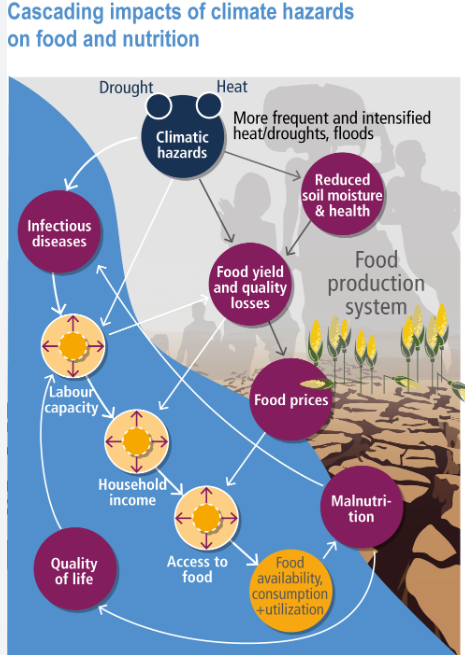
Important Highlights Of The Report:
- Poor households lose an average of 5% of income from heat stress and 4.4% from floods annually compared to wealthier families.
- The report, titled “The Unjust Climate,” emphasises that the farming population in India is highly vulnerable to climate stressors, such as droughts and floods.
- During droughts, poor households dedicate more resources to agriculture due to fewer off-farm job opportunities.
- Structural inequalities exacerbate the vulnerability of these households, leading to reduced total incomes.
- The report calls for policy measures, including expanding social security and implementing anticipatory social protection programs.
- It recommends scaling up livelihood support ahead of extreme weather events and promoting workforce diversification to reduce poverty.
- In response NITI Aayog highlighted India’s efforts through National Innovations on Climate Resilient Agriculture (NICRA) and the employment guarantee scheme to combat climate change.
4. Nobel for microRNA underscores the primacy of RNA in biology
(Source – The Hindu, International Edition – Page No. – 7)
| Context |
|

Nobel Prize in Physiology or Medicine 2024:
- Winners: Victor Ambros and Gary Ruvkun received the Nobel Prize for discovering microRNA (miRNA).
- What is miRNA?: It is a tiny molecule that helps control how proteins are made in cells.
- Importance of Their Work:
- New Understanding: Their research changed how scientists view gene control, showing that this process happens in many living things, not just roundworms.
- How It Works: miRNA attaches to messenger RNA (mRNA), which carries instructions for making proteins, or stops the proteins from being produced.
- Impact on Health: This discovery is important for understanding development, stress responses, and diseases like cancer.
- Further Research: After their discovery, scientists found many more miRNAs that regulate around 60% of human genes.
- Clinical Trials: Their work can lead the way for new treatments using miRNA, although early trials faced challenges.
- Overall Impact: This Nobel Prize highlights how important RNA is for understanding how cells work and opens doors for future medical treatments. It shows that RNA, rather than just DNA, is crucial for controlling life in cells.
5. Chinese lab that seeks to crack physics mystery nears completion
(Source – The Hindu, International Edition – Page No. – 4)
| Context |
|
Analysis of the news:
- The Jiangmen Underground Neutrino Observatory (JUNO) in Guangdong, China, is nearing completion, with a giant sphere 700m underground housing thousands of light-detecting tubes.
- With a budget of $300 million, JUNO aims to study neutrinos produced by nuclear reactions, which could reveal insights into the universe’s early subatomic processes.
- The observatory will analyse neutrinos emitted from two nearby nuclear power plants for up to six years, also observing solar neutrinos and those from radioactive decay in the Earth.
- JUNO is expected to start operations in late 2025, ahead of other neutrino experiments like the Deep Underground Neutrino Experiment (DUNE) in the U.S.
- Collaborating institutions include those from France, Germany, Italy, Russia, the U.S., and Taiwan.
- The data collected will be transmitted to multiple locations for cross-verification by independent teams before publication.
6. Astronauts to wear Prada as Axiom unveils new suit
(Source – The Hindu, International Edition – Page No. – 15)
| Context |
|

Analysis of the news:
- Axiom Space has collaborated with Prada to create lunar suits for NASA’s Artemis 3 mission, planned for September 2026.
- These lunar suits are designed for safety and comfort, allowing astronauts to perform tasks effectively in challenging conditions.
- They are unisex and adjustable to accommodate different sizes, ensuring inclusivity as the mission aims to include the first woman on the moon.
| NASA’s Artemis 3 Mission |
|
7. India Commits to Ethical AI with New EoI initiative
(Source – https://pib.gov.in/PressReleseDetail.aspx?PRID=2065579®=3&lang=1 )
| Context |
|

IndiaAI Mission:
- Objective: Establish a robust AI computing infrastructure in India to support AI development and testing.
- Focus Areas: Enhance data quality, develop indigenous AI technologies, attract talent, foster industry collaboration, support impactful startups, and promote ethical AI practices.
- Financial Backing: Union Cabinet approved a budget of ₹10,372 crore for the mission in March 2024, targeting computing capacity of over 10,000 GPUs.
- Key Components:
- Application Development: Promotion of AI applications for government sectors to drive socio-economic transformation.
- Education Initiatives: Expansion of AI education through various academic programs and labs in smaller cities.
- Startup Financing: Streamlined funding access for deep-tech AI startups, with an additional ₹2,000 crore earmarked for growth support.
- Compute Capacity: Creation of an AI ecosystem with over 10,000 GPUs and an AI resource marketplace.
- Innovation Centre: Development of indigenous Large Multimodal Models (LMMs) with ₹2,000 crore allocated.
- Datasets Platform: Unified access to quality non-personal datasets for startups and researchers.
- Ethical AI: Establishment of guidelines and frameworks to ensure responsible AI practices.
| PYQ: Introduce the concept of Artificial Intelligence (AI). How does AI help clinical diagnosis? Do you perceive any threat to privacy of the individual in the use of Al in healthcare? (150 words/10m) (UPSC CSE (M) GS-3 2023) |
| Practice Question: Discuss the importance of ethical AI in the development and deployment of artificial intelligence technologies. Analyse the potential challenges associated with ensuring ethical practices in artificial intelligence. (150 Words /10 marks) |

